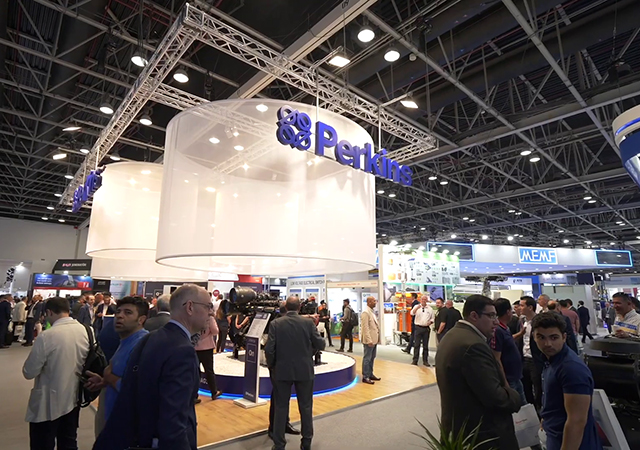

Gulf Industry Magazine brings you the latest tenders available in the Gulf region.
RTA to spend $1bn on Dubai projects
Dubai's Roads and Transport Authority (RTA) has been allocated a Dh7.6-billion ($2.07 billion) budget for this year with the lion’s share set aside for rail development.
While an amount of $1.06 billion has been earmarked for operational expenditure, a total of $1 billion will be spent on 55 infrastructure projects comprising 12 new road schemes and 43 ongoing developments, said Mattar Al Tayer, the director-general and chairman of the board of executive directors of RTA.
“The aggregate anticipated revenues for this year amount to $2 billion, marking a 14 per cent increase over last year,” stated Al Tayer.
Giving details of the breakdown, the top official said 37 per cent of the budget would be allocated to the rail sector, 31 per cent to traffic and roads, 10 per cent to public transport, four per cent for the licensing agency, and 18 per cent to supporting sectors at the RTA.
According to Al Tayer, some of the key projects set for completion this year include the Dubai Water Canal (by year’s end) and the Union Museum in addition to the upgrading of the Wafi Interchange, the Umm Al Sheef and Latifa bint Hamdan roads junction on Sheikh Zayed Road, Dubai International Airport junctions, Al Shindagha Hub, Al Wasl and Jumeirah Roads, entries to Al Awir Road and International City, and cycling and running tracks (covering multiple areas of Dubai).
Electronics accessories market healthy
THE electronics accessories market in the Middle East region is projected to be worth over $1.01 billion, registering a healthy CAGR (compound annual growth rate) of 5.4 per cent over the next nine years, said a report.
In terms of volume, the regional electronics accessories market is projected to register a CAGR of 6.5 per cent during the period till 2025, stated Future Market Insights (FMI) in its latest report titled “Electronics Accessories Market: Middle East Industry Analysis and Opportunity Assessment, 2015 – 2025”.
Players in the Middle East are developing specific products such as headphones and earbuds and aesthetically designed electronic devices, it stated.
These include Samsung Electronics, Sony, Toshiba, Panasonic, Clarion, Pioneer, LG Electronics, Logitech international, Astrum Holdings Limited and Intex Technologies India.
Demand for earbuds and headphones that offer superior noise cancellation is expected to significantly rise among the increasing number of audiophiles in the regions in the near future, said the FMI in its report which delivers key insights on the Middle East electronics accessories market.
Growth of the Middle East electronics accessories market is mainly driven by a proliferation of connected devices, the increasing disposable income of consumers in urban areas in the GCC and growing Internet penetration, which in turn is leading to the rising preference of consumers towards online retail in these regions, according to the report.
Increasing adoption of mobile devices amongst the youth in the GCC region is providing significant stimulus for growth of the electronic accessories market in the region, it added.
DWC freight traffic up 7.7pc in 2015
AIR freight traffic at Dubai’s second airport, Dubai World Central (DWC) rose 7.7 per cent during 2015 according to the year-end traffic report issued by operator Dubai Airports.
Air cargo volumes for the year totalled 888,714 tonnes, up 7.7 per cent from 824,933 tonnes recorded during 2014. Year on year cargo volumes increased despite a dip in fourth quarter (Q4) traffic when DWC handled 228,770 tonnes of freight down 9.9 per cent from 253,932 tonnes recorded during same quarter in 2014.
DWC welcomed 179,781 passengers in Q4, up 62 per cent from the 110,920 who used the facility during the same period in 2014. Passenger numbers rose thanks to the introduction of flights operated by flydubai from October 2015.
For the full year DWC welcomed 463,236 passengers in 2015 down 45.2 per cent from the 845,046 recorded during 2014. Both cargo and passenger numbers in 2014 were inflated by additional services operated into DWC while Dubai International was reduced to a single runway airport as a result of the runway refurbishment project.
Aircraft movements in Q4 rose 3.1 per cent to 12,052 compared to 11,687 movements during the same period last year. Full year aircraft movements reached 42,055 down 11.8 per cent from 47,655 movements recorded in 2014 again due to the one-off spike in activity created by the runway project at DXB.
“DWC is entering an exciting new phase of its development as we expand the facility to prepare for additional operations from flydubai,” said Paul Griffiths, CEO of Dubai Airports.
“Just five years after its opening, DWC has risen up the ranks to take the Number 18 position in terms of international cargo volumes. As passenger services continue to ramp up DWC, it will similarly elevate its status as an attractive option to DXB for passengers.”
Most Saudis want banking norms
TWENTY-TWO per cent of banking consumers in Saudi Arabia are less than satisfied with their bank’s existing product offering, a report said, adding that as high as 62 per cent of them demand better banking standards.
As high as 38 per cent of Saudi Arabia respondents would recommend their bank as a first choice to friends or colleagues, according to the first ever NPS Survey conducted in the kingdom by Souqalmal.com, Saudi Arabia’s leading financial comparison website.
The results of the survey have been used to conceptualize the inaugural Souqalmal Bank Satisfaction Index.
Ambareen Musa, the founder and CEO of Souqalmal, observed that the numbers seen in Saudi Arabia are highly positive and indicative of a tangible paradigm shift towards transparency both from the banking sector and the government which has been well-received by consumers.
“With only 12 banks and around 400 banking products, the offering in the kingdom is constantly evolving and the opportunities are truly endless,” said Musa. The call seems to be for a greater focus by banks on sophisticated customer segmentation, smarter product-bundling, along with cross-selling and up-selling based on comprehensive customer insights.
According to the Saudi Arabian Monetary Agency (Sama), the number of bank branches in Saudi Arabia as of December 2015 was 1989, an increase from the 2014 figure of 1912. The trend is positive but 17 per cent of survey respondents would still like to see a wider branch network, and a significant number of them also want better ATM coverage in Saudi Arabia.
With a young population it is only natural that customer expectations are outpacing improvements from technology, said Musa.









